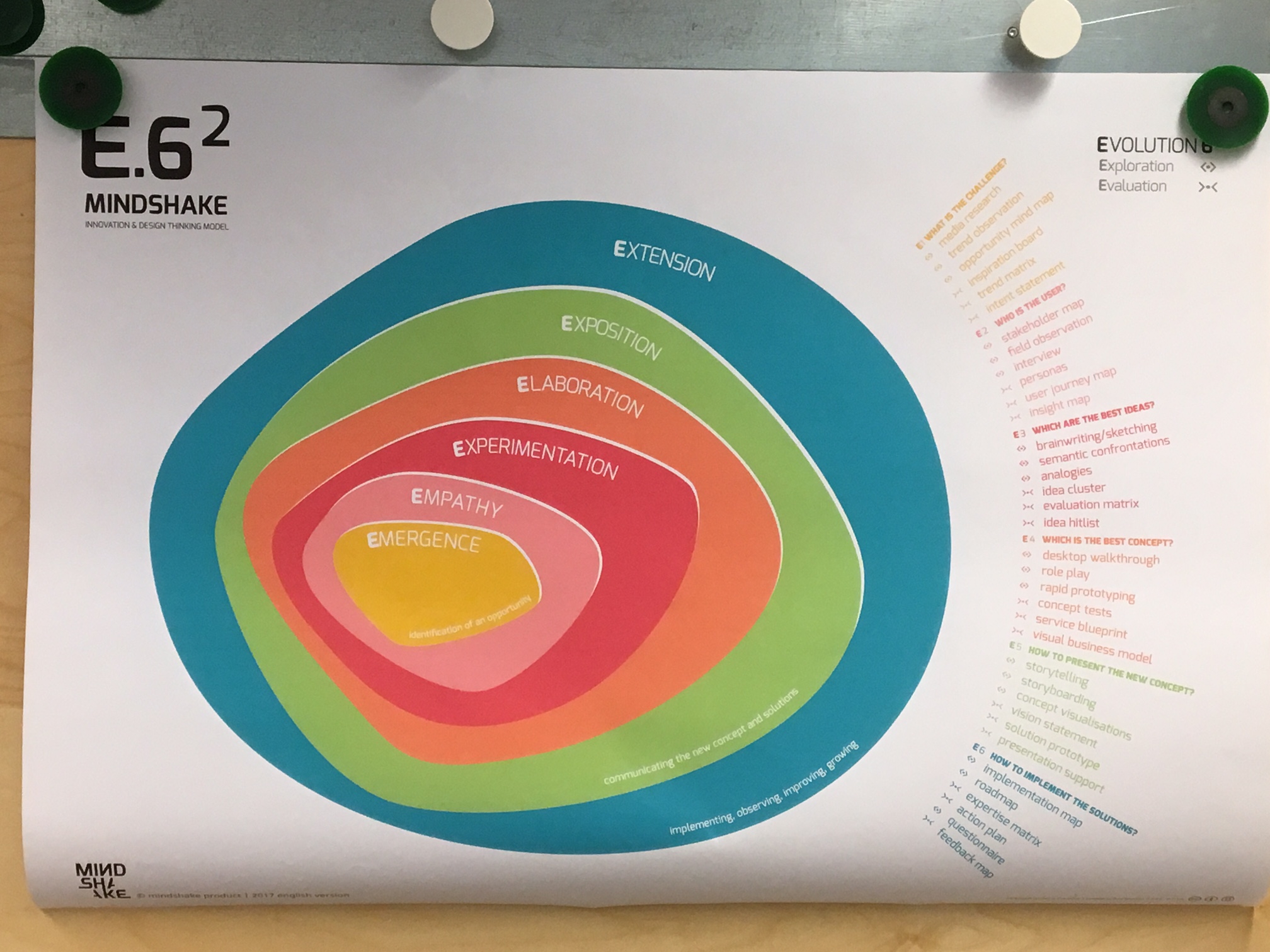Nearly two decades ago I completed my Master’s Degree in Business. My work history is in consumer marketing and brand management. In the marketing, thinking “outside the box” has been a common way of working. Now, as a new Service Design student at Laurea, I am learning to become a “Design Thinker”.

Design Thinking is a methodology applied in Service Design to solve problems in order to improve existing services and innovate new ones. I look forward to discovering the creativity in me, something they did not teach me at business school.
Design Thinking Course at Laurea
My Service Design studies started with a two-day intensive Design Thinking workshop presented by Katja Tschimmel. This course was an introduction to the concept of Design Thinking, its history and different process models developed to take Design Thinking into practice.

Design Thinking has been defined in many ways. Tschimmel (2012) defines Design Thinking as a way of thinking which leads to transformation, evolution and innovation. Design Thinking is characterized by human-centered approach, collaboration, experimentation, divergent thinking, visualization, prototyping and a holistic perspective.
Several process models have been developed to guide through the creative DT process. In her article, Tschimmel gives a good overview of some of the best known DT process models: IDEO’s 3 I Model (Inspiration, Ideation, Implementation), IDEO’s HCD Model (Hearing, Creating, Delivering), The Model of the Hasso-Plattner Institute, The 4 D or Double Diamond Model of the British Council and The Service Design Thinking (SDT) Model. These process models have been created to make the Design Thinking process more understandable and applicable in companies and other organizations.
Katja Tschimmel has created her own process model to guide through the Design Thinking process. Her Evolution 6² innovation and design thinking model consists of the following phases: Evolution, Emergence, Empathy, Experimentation, Elaboration, Exposition and Extension. In each phase of the process, Exploration and Evaluation are present.

In the Design Thinking course, we focused on “the doing”. In the real world, Design Thinking process is carried out by inter-organizational teams, and often users or customers and other stakeholders are being involved in the process. We were also working in teams trying to make most of our creativity. We were learning to apply the Evolution 6² model into practice. All groups worked hard and came up with some interesting new service concepts for “Studying at Laurea”. This was a good exercise on group dynamics, but I am quite sure that many of us were thinking afterwards that the teams could have been even more creative.
The visualization of ideas is central to Design Thinking in order to clarify the task, give new insights and help communicate within a group. Tschimmel classifies the most used Design Thinking tools into the following types: Observation and register on place, Mind Maps and other kind of Information Maps, Personas and Empathy Map, Brainwriting and Brainsketching, Sketching, Visual and Semantic Confrontations, Storyboard, Rapid Prototyping, Storytelling and Learning Experiences or Test.
During the course, we were introduced to some of these tools. Soon we noticed that the use of Post It’s can speed up the brainstorming in teams and we had so much fun in building our prototypes with Lego bricks.

Everyone can be a Design Thinker
Of course, I would like unleash my inner Design Thinker and become a “machine” that generates creative ideas. Tim Brown (2008) declares that “Thinking like a Designer can transform the way you develop products, services, processes – and even strategy.” Expectations are high. Brown lists five characteristics of a Design Thinker.

To the list above, I would add two things. A Design Thinker needs a lot of patience, because it could take a long time until the right issues are identified. You also need to be able to stand chaos and accept failure.
Creativity lives in all of us
So the two intensive contact days were a good jump start for my Service Design studies at Laurea. No doubt, we could all benefit from the designers’ way of thinking and working.
My biggest learning was that creativity lives in all of us. Do not say that “I am not a creative person”. Creativity is more than artistic talent or genetics. There are many ways to use the creativity. Just have an open mind, dare to try something new and let the new ideas flow. Katja Tschimmel reminded us that mistakes and failure are an important part of the design process, so they are s acceptable.
I cannot wait to unleash the creativity in me and take the interesting Design Thinking tools into use. Maybe I will be able to innovate something new!
Written by: Hannele Piirinen
Sources:
Tschimmel, Katja 2012. Design Thinking as an effective Toolkit for Innovation. In: Proceedings of the XXIII ISPIM Conference: Action for Innovation: Innovating from Experience. Barcelona. http://www.academia.edu/1906407/Design_Thinking_as_an_effective_Toolkit_for_Innovation
E.62 MindShake toolkit http://www.academia.edu/1906407/Design_Thinking_as_an_effective_Toolkit_for_Innovation
Brown, Tim 2008. Design Thinking. Harvard Business Review, June, 84-95. http://www.ideo.com/images/uploads/thoughts/IDEO_HBR_Design_Thinking.pdf

Leave a comment